First Aid for Anaphylaxis
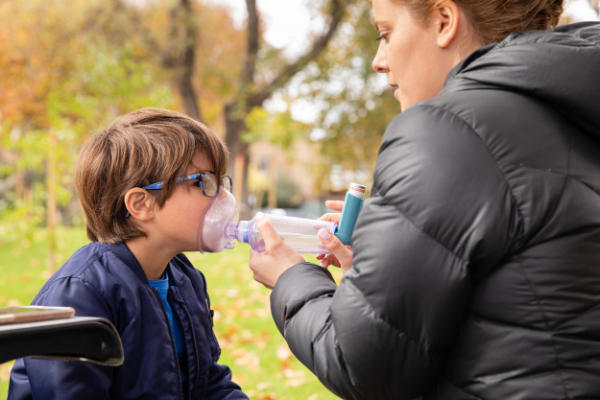
In Australia, allergies are very common. Currently around one in three people will develop allergies at some time during their life. It is estimated that up to 2% of adults, 1 in 10 babies and 6% of children have a food allergy and some of them will experience a life-threatening allergic reaction (anaphylaxis).
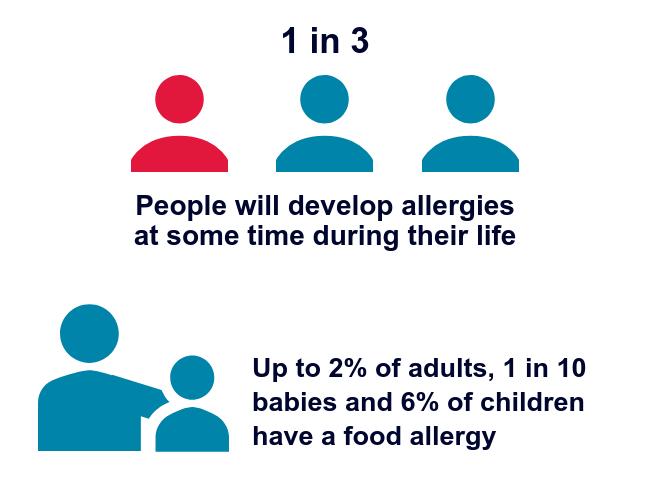
What is Anaphylaxis?
Anaphylaxis, or anaphylactic shock, is the most serious allergic reaction and can cause death without prompt medical attention.
Anaphylaxis is a generalised allergic reaction, which often involves more than one body system (e.g. skin, respiratory, gastro-intestinal and cardiovascular). Food allergies, insect stings, medications (including prescriptions, over the counter, alternative therapies), and latex are the most common causes of anaphylactic reactions. A severe allergic reaction or Anaphylaxis usually occurs within 20 minutes to 2 hours of exposure to the trigger and can rapidly become life threatening.
Anaphylaxis requires immediate administration of an adrenaline auto-injector (AAI), and triple zero (000) should always be called.
Each year, approximately 10 people die from anaphylactic reactions of which some of these have been triggered by food.
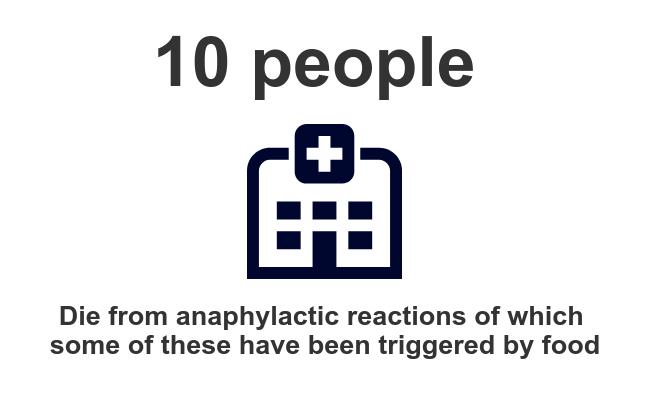
How to identify anaphylaxis – the symptoms
Anaphylaxis can occur within minutes – the average is around 20 minutes after exposure to the allergen. Symptoms may be mild at first but tend to get worse rapidly.
- Facial swelling, including swelling of the lips and eyelids
- Swollen tongue
- Reddening of skin across the body
- Hives (red welts) appearing across the skin
- Abdominal discomfort or pain
- Vomiting
- Strained or noisy breathing
- Inability to talk or hoarseness
- Wheezing or coughing
- Drop in blood pressure
- Unconsciousness
- Young children may become floppy and pale
Triggers of anaphylaxis
Anaphylaxis occurs when the immune systems severely overreacts to a substance or ‘trigger’ in the person’s environment that is typically harmless. The immune system responds by making antibodies to attack the allergen and this starts off a range of immune system reactions. Anaphylaxis is the most severe allergic reaction and affects about one person in 200.
Some of the more common triggers (allergens) that can lead to anaphylaxis include:
- Food – any food can be a trigger. However, the most common trigger foods that account for about 90 per cent of allergic reactions include seafood (such as lobsters, prawns and crabs), eggs, milk, peanuts, tree nuts (such as almonds, cashews, pecans and walnuts) and sesame or soy products
- Insect venom – including bees, Jumping Jack ants, ticks, fire ants and wasps
- Medicines – from some prescription drugs (such as penicillin), over-the-counter medicines (such as aspirin) and herbal preparations
- Uncommon triggers – include exercise, anaesthesia or latex
- Unknown triggers – sometimes, despite exhaustive investigations, a person’s trigger or triggers cannot be identified
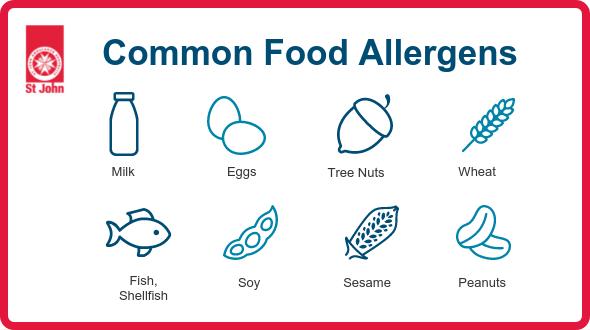
How to prevent anaphylaxis
The best way to avoid anaphylaxis is to follow your anaphylaxis management plan. Common suggestion includes: Avoid triggers – the most important management strategy is to keep away from all known triggers
- Avoid triggers – the most important management strategy is to keep away from all known triggers
- Learn about and identify hidden triggers – trigger education with an accredited dietitian can help you to identify allergens that may be hidden inside processed and packaged foods.
- Tell your friends and workmates – it is important that the first aiders at your workplace (or other organisations where you regularly visit, as a volunteer or club member for example) know where your AAI is stored and how to use it in case you need help
- Carry an adrenaline auto-injector (EpiPen) at all times
- Complete Anaphylaxis First Aid Training
Anaphylaxis First Aid
An anaphylactic reaction is a life-threatening medical emergency and triple zero (000) must be called immediately.
In the event of an Anaphylactic episode, you should:
- Follow the DRSABCD
- Call triple zero (000)
- Lay the casualty down or in a position which they find easiest to breathe (not standing)
- Ask if they have their adrenaline auto-injector on them
- If the casualty cannot administer the injection themselves help them
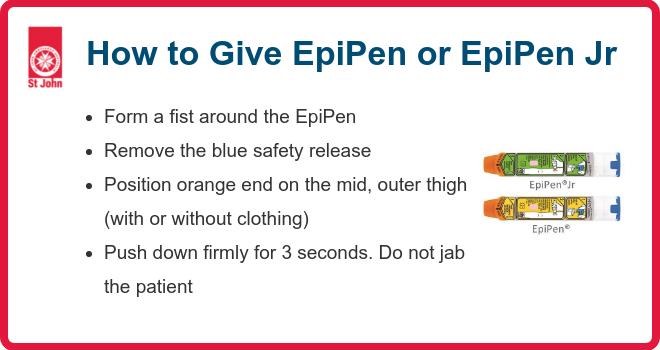
6. Record the time the adrenaline auto-injector was delivered
7. If the casualty had not been previously diagnosed and therefore does not have the appropriate medication, wait for medical assistance to arrive
8. Ensure the casualty remains lying flat. If breathing is difficult allow them to move into a comfortable position to breathe (sitting up)
9. Monitor the casualty’s breathing
10. Once five minutes has passed, if there is no response or improvement, administer another dose whilst alerting the 000 operator who will instruct you further if needed
Anaphylaxis is the most severe allergic reaction and is a medical emergency requiring immediate treatment and urgent medical attention. To prevent an anaphylactic episode, it’s most important to avoid all triggers and to always carry your adrenaline auto-injector (AAI).
References :
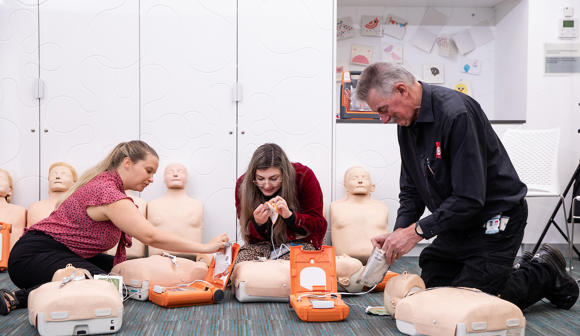
HLTAID011 PROVIDE FIRST AID
Suitable for both people in workplaces and members of the public who would like a comprehensive first aid course.
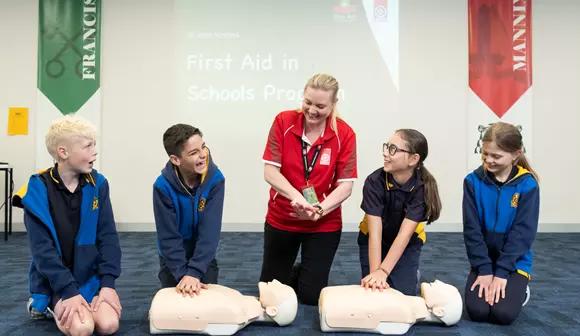
FIRST AID IN SCHOOLS PROGRAM
This free program teaches primary school students the importance of First Aid and what to do in an event of an emergency.

CARING FOR BABIES AND KIDS
Designed for parents and carers. Learn to manage basic first aid situations specific to babies and kids up to 7.
